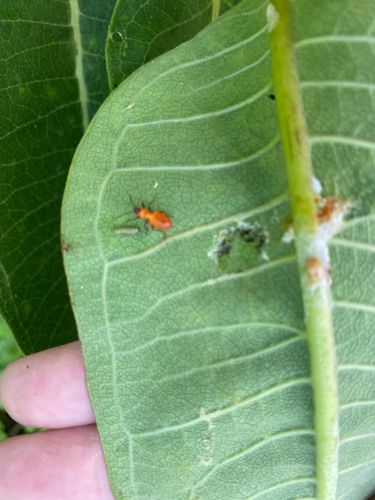Small Milkweed Bug
Scientific Name: Lygaeus kalmii (or a closely related milkweed bug nymph, likely a species within the genus Lygaeus or Oncopeltus but appears very similar to L. kalmii nymph)
Order & Family: Hemiptera (Order); Lygaeidae (Family)
Size: Nymphs typically range from 2-8 mm, growing larger as they mature through instars. Adults are generally 10-12 mm in length.

Natural Habitat
Found in areas where milkweed plants grow abundantly, such as meadows, fields, roadsides, and gardens, particularly in North America. They are often found directly on the milkweed plants themselves.
Diet & Feeding
Primarily feed on the seeds and sap of milkweed plants (Asclepias species). They use their piercing-sucking mouthparts to extract nutrients.
Behavior Patterns
Nymphs and adults feed by sucking sap from plant tissues, often congregating on the undersides of leaves or on stems. They can reproduce rapidly under favorable conditions, leading to large populations. They undergo incomplete metamorphosis, with nymphs resembling smaller, wingless versions of the adults.
Risks & Benefits
Potential risks include damage to milkweed plants, which are crucial for monarch butterfly larvae. Heavy infestations can weaken plants and reduce seed production. However, they are generally not considered a severe agricultural pest since their primary host is milkweed, which is often a wild plant or grown specifically for monarchs.
Identified on: 9/1/2025